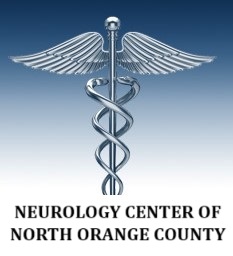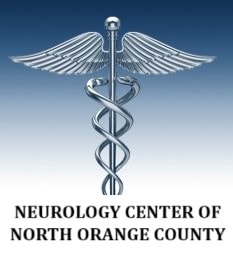How are Alzheimer’s Trials Run and Reviewed? Reviewing Clinical Trials and New Drugs for Alzheimer Disease Research
(Understanding the Disease Drug Development Pipeline and How Clinical Trials Work)
Research allows us to give a definition to hope. It really opens your eyes when you consider how an Alzheimer’s clinical trial is conducted and how you can involve yourself in studies. When you sign up, you can shed more light on disease progression and therefore open a portal to better medical care.
Current Clinical Trials Tests for Neurodegenerative Disease
Alzheimer’s research studies don’t follow a single script. Instead, they move through several steps—each one checking for safety, effectiveness, and long-term effects.
How are Alzheimer’s Trials Run and Reviewed – Taking a Closer Look
In a way, every stage builds on the previous one and reveals insights into treatments ranging from drugs that tackle amyloid buildups to those aimed at boosting cognitive skills. All of this happens under very tight rules that ensure ethical conduct, even if the language sometimes feels a bit formal.
Now, you might wonder why these trials are so significant. Quite simply, they power scientific advances that bring us closer to a potential cure for this stubborn neurodegenerative condition.
When it comes to treatments right now, most options only manage symptoms rather than slowing the disease’s progress. Phase III trials have hinted that earlier intervention might make a genuine difference for those in the mild stages. There’s an obvious need for better therapies since current medications can’t fully address the problem. Hence, these trials carry immense significance.
Researchers are increasingly moving away from focusing solely on the amyloid theory and instead testing out a variety of treatment ideas.
ADNI Studies
The Alzheimer’s Disease Neuroimaging Initiative (ADNI) is a long-running project that pulls together data from clinical exams, imaging, genetics, and biomarkers—all to piece together the puzzle of the disease.
FDA Patient Safety
By looking at the whole process, it’s clear that these multi-phase clinical trials for AD are indispensable for developing treatments that are not only effective but also safe for people with Alzheimer’s disease.
Each phase—evaluating everything from side effects to overall efficacy—supports the work of bodies like the Food and Drug Administration. FDA investigators keep a close eye to ensure that every new treatment meets the high standards required for patient safety.
People joining these ongoing trials and studies have to meet pretty strict rules—eligibility and exclusion criteria that often make enrollment a real headache, with costs piling up along the way.
The overall idea is to spot treatments that might slow down or even put a brake on cognitive decline, zeroing in on things like amyloid plaques and nerve fiber tangles – both of which are common signs of Alzheimer’s. Every step sort of builds on the previous one, slowly sharpening our picture of how a new drug might work.
Phase 1 Trials
Phase 1 is really the starting block of the ad clinical trial process. In this clinical research stage of the disease, a small group of healthy volunteers is brought in just to see if the medication acts safely and to figure out roughly what dosage is safe yet effective.
Researchers check for any unwanted reactions while also getting an early peek at how the drug might fight off issues like amyloid build-up or tau tangles.
Although these early experiments and ad trials are mostly exploratory, they lay a foundation for the stages to come, and in most cases, this groundwork is key to carving out future directions.
The number of phase 1 trials that were initiated create a lynchpin for clinical trial data to further investigate symptoms of the disease.
Phase 2 Trials
Next up, Phase 2 takes a bit of a broader approach. Here, a larger bunch—usually a few hundred Alzheimer’s patients—gets involved to tease out preliminary hints of the drug’s effectiveness and fine-tune the dosing.
Phase ii trials are typically randomized and done in a double-blind, placebo-controlled format, though they aren’t large enough to wholly confirm effectiveness of clinical outcome measures.
Still, these studies serve a vital role in justifying and shaping how the drug might be used in more critical, larger-scale tests later on for disease dementia treatments.
Phase 3 Trials
Then there’s Phase 3 clinical trials. These prevention trials are much bigger, often enlisting thousands of patients and stretching over a longer period. Their main goal is to nail down the drug’s clinical benefits while keeping an eye on any side effects, gathering robust evidence to win regulatory approval.
These trials check the clinical efficacy and clinical outcome of ad drugs – especially two phase 3 trials.
Sometimes, though, things get messy—issues like choosing the wrong outcome measures or the drug being tested too late in the disease process can cloud the findings in the clinical trial design.
Disease cooperative study trials, such as those with Bapineuzumab or the Anti-Amyloid Treatment in the Asymptomatic Alzheimer’s Disease Trial, have shown how challenging it can get; careful recruitment and stratifying participants become really critical here.
Keeping the Ball Rolling – Phase 4
Even after a drug is approved and hitting the market, Phase 4 trials for Alzheimer’s keep the ball rolling. In these post-market clinical trials for Alzheimer’s disease, researchers continue to track long-term safety and measure effectiveness in everyday settings.
They’re looking out for rare or lingering adverse effects that earlier tests might have missed for patients with early Alzheimer’s disease.
Biomarkers
Biomarkers represent measurable indicators of the disease’s progression and therefore are very useful for the treatment of Alzheimer’s disease and setting up new trials.
Biomarkers can help researchers develop drugs for Alzheimer’s disease from these indicators, such as cerebrospinal fluid (CSF), neuroimaging, and biomarkers that are blood-based.
For instance, healthy people living with Alzheimer’s disease, joining a clinical trial, can help people with prodromal Alzheimer’s disease with the use of these indicators.
An Alzheimer’s disease assessment, based on biomarkers can measure subtle cognitive changes in individuals with Alzheimer’s before full-blown dementia takes form.
Participating in a clinical trial helps researchers assess mild memory issues, reduced attention and spans, and problems with confusion more extensively.
Different therapies are being tested all over, each one joining the collective effort to keep Alzheimer’s symptoms at bay while trying to keep up with the real-world challenges patients face.
The Clinical Trial Network – Learning More About Alzheimer’s Disease
Clinical trial phases kick off the whole process by giving researchers a kind of roadmap—they scramble together in networks that zero in on dominantly inherited Alzheimer cases without a rigid structure. However, this Alzheimer’s disease cooperative can shake up things for Alzheimer’s disease research.
Trials end up chasing a broad set of targets, like beta-amyloid, tau proteins, neurotransmitter receptors, and signs of neuroinflammation. In most cases, collecting data on the actual symptoms is key, because, without this activity, it’s hard to really know what’s going on with the disease.
Anti-Amyloid Therapies and Treatments
Anti-amyloid drugs are being pushed through rigorous tests to see if they can shift the course of Alzheimer’s, mostly in randomized clinical trials.
Anti-tau treatments jump in to tackle the tau problems that seem to fuel Alzheimer’s progression. These therapies, in most cases, take a close look at how tau and amyloid proteins riff off each other, opening up possibilities for combination treatments.
They’re part of a broader push for neuroprotection and a better grip on inflammation in the brain—tau strategies often shine as promising allies after amyloid clears out, adding another layer to a multi-target approach.
Neuroprotectors
Neuroprotectors aim to slow down the disease by poking at its underlying mechanisms. Researchers are testing these approaches to see if they can curb not just amyloid buildup but also the erratic behavior of tau proteins and inflammatory processes – all prevalent due to Alzheimer’s disease.
Early-stage recruitment, as many experts note, is critical for delaying the onset of symptoms of people with mild Alzheimer’s disease. Increasing participation from around the globe—even beyond the United States—shows just how varied and unpredictable Alzheimer’s disease cooperative study trials can be.
Cognitive Enhancers
Then there are cognitive enhancers like semaglutide, a GLP-1 receptor agonist, which are under investigation. Researchers conducting clinical trials in Alzheimer’s disease are checking if they can boost memory and overall thinking skills in people with Alzheimer’s.
These trials zoom in on receptors and pathways that manage day-to-day cognitive tasks.
Even though some drug pairings haven’t delivered striking results yet, the chase continues, with investigators exploring synergies between taming neuroinflammation and clearing out amyloid, all in hopes of putting a wrench in the relentless decline of memory.
Studying Neuroinflammation
Anti-neuroinflammatory trials often dig into how Aβ might act as a proinflammatory trigger, messing with neuronal function.
New neuroinflammation studies also hint that microglia, which start out protective, can flip to a harmful mode when constantly exposed to Aβ.
In Conclusion
As you can see, all these trials support current and future therapies. Maybe you can make a difference in the research yourself. Learn how you can contribute to research trials or keep up on the new therapies. Some of the biggest strides are being made today in Alzheimer’s research.



